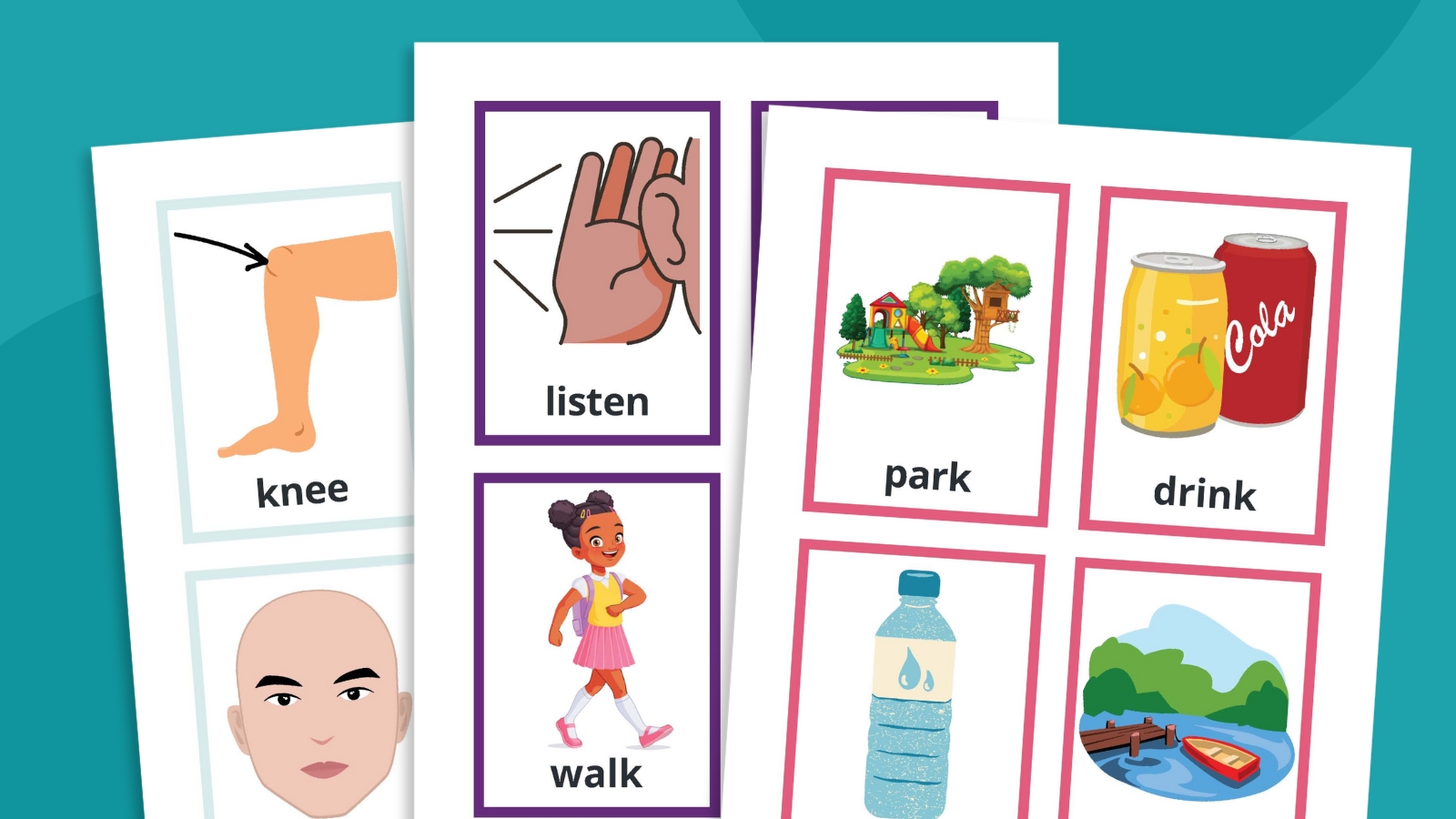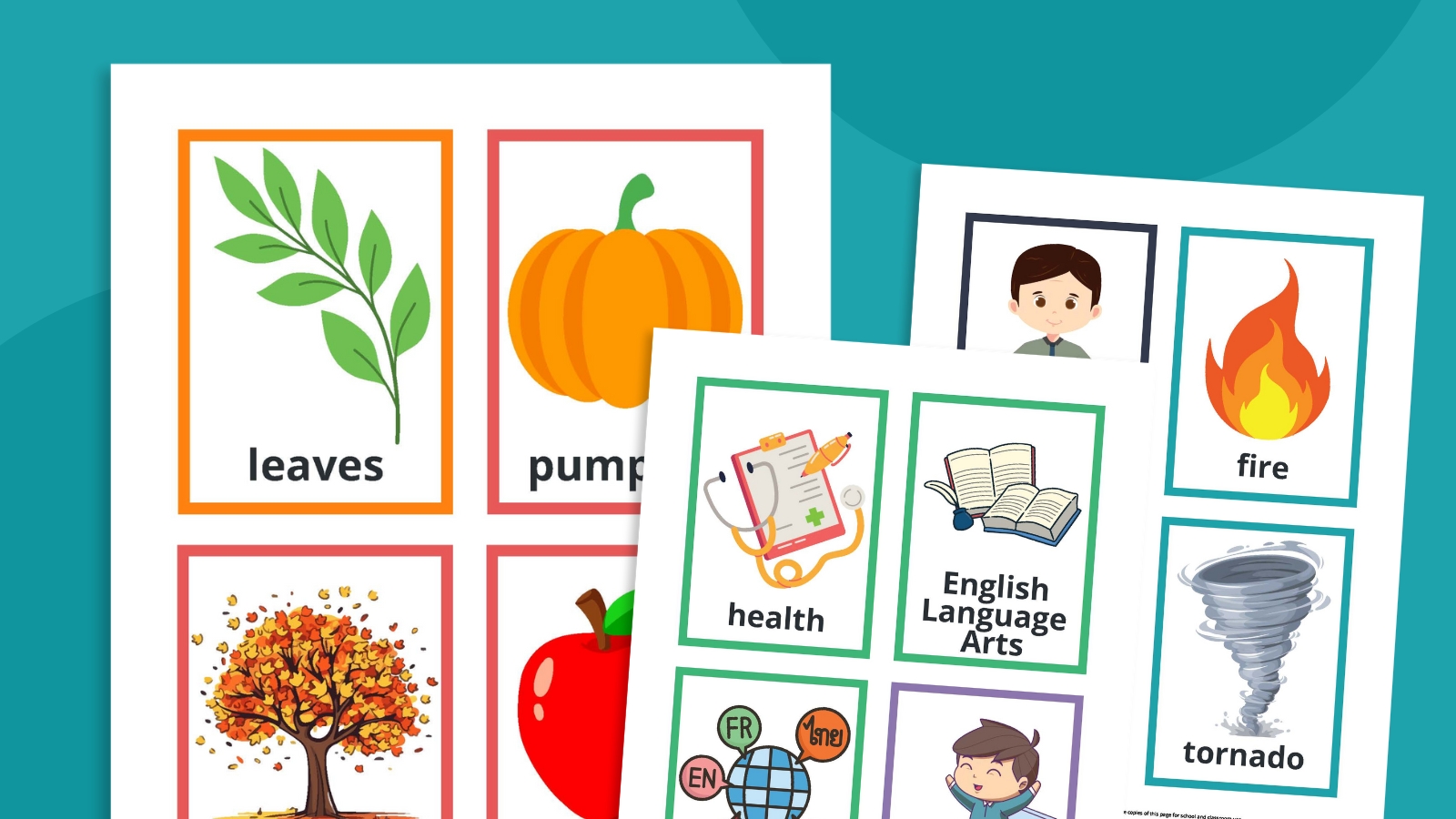Building a strong vocabulary from an early stage sets the groundwork for lifelong learning and academic success for all learners, and it’s especially important for multi-language learners (MLLs). Incorporating vocabulary into your ESL instruction is important because vocabulary knowledge directly impacts reading comprehension. MLLs with limited vocabulary often struggle to understand texts, which hinders their academic progress across all subjects. On the other hand, having a robust vocabulary helps these students understand idiomatic expressions and cultural nuances, which gives them a deeper understanding of the English language.
Grab our free printable ESL word lists and cards, then try some of the activities below!
Why ESL Vocabulary Word Lists Work
Word lists are a great way to support your students in their development of the English language. They provide a reference for students to help them understand new vocabulary (both academic and social vocabulary), use new vocabulary, and write words independently. Word lists can be used whole-group through visual aids and posters or individually through personalized dictionaries and more.
Here are some of the benefits of using ESL vocabulary word lists and cards in the classroom:
- Word lists provide a structured way for ESL students to grasp new vocabulary.
- Repetition and visual reinforcement through word cards aid in long-term retention.
- Regular practice with word lists ensures ongoing vocabulary development.
- Grouping words by themes allows students to understand and use them in real-world contexts.
- Students systematically build their vocabulary, which is foundational for language proficiency.
- Familiarity with key vocabulary increases students’ confidence in using the language.
- A strong vocabulary supports overall academic success across subjects.
- Word lists and cards can make learning interactive and enjoyable.
ESL Vocabulary Word Lists
The word lists below can be used with your ESL/MLL students and are broken out by category.
Winter Words
blizzard, boots, cold, fireplace, frost, hat, ice, jacket, precipitation, scarf, sled, snow, snowflake, winter
Summer Words
beach, hat, pool, sandcastle, shorts, sun, sunscreen, swim, temperature, T-shirt, vacation
Spring Words
bloom, butterfly, flowers, garden, grass, puddle, rain, rainbow, seed, sprout, sunshine
Fall Words
acorn, apple, autumn, harvest, leaves, pumpkin, scarecrow, sunflower, sweater, Thanksgiving
Academic Words
art, computers, dismissal, English Language Arts, geography, health, history, language, library, lunch, math, music, reading, recess, science, social studies, specials, writing
Daily Routine Words
bedtime, breakfast, brush teeth, chores, dinner, fill water bottle, get dressed, go to school, homework, lunch, outdoor play, pack a snack, pack backpack, pack lunch, reading time, snack time, study time, wake up
Clothing Words
belt, boots, coat, dress, gloves, hat, jacket, mittens, pajamas, pants, raincoat, sandals, scarf, shirt, shoes, shorts, skirt, sneakers, socks, sweater, swimsuit, T-shirt, underwear
Family Words

aunt, brother, cousin, father, grandfather, grandmother, mother, nephew, niece, sister, uncle
Emergency Words
alarm, earthquake, emergency exit, evacuation, fire, fire extinguisher, first aid kit, lockdown, shelter, smoke detector, tornado
Body Parts Words
ankle, arm, back, belly button, calf, chest, elbow, fingers, foot, hand, head, knee, knuckle, leg, neck, ribs, shoulder, stomach, toes, wrist
Playground Words
basketball, climbing, monkey bars, play structure, slide, soccer, swings, tag, track
Verbs
carry, crawl, hold, hug, jump, kick, lift, listen, pull, push, run, sit, skip, stand, stretch, swim, talk, throw, walk
Nouns

animal, apartment, car, drink, food, gym, house, lake, library, ocean, park, person, river, school, store, water
How To Use ESL Vocabulary Word Lists
Your ESL vocabulary word lists shouldn’t become a poster on the wall that is long forgotten and collecting dust. When thinking of ways to implement word lists, you want to consider practical strategies—something that will be referenced regularly throughout instruction, a useful tool for students, and that they’re easy to navigate and understand.
Here are some effective methods for integrating word lists into your teaching.
Word Walls
Create a word wall in your classroom where new vocabulary is displayed. Encourage students to reference this wall during writing activities.
Interactive Games
Incorporate word list games such as matching words to pictures, image association games like Pictionary, “Guess My Word,” memory games, or bingo.
Writing Exercises
Assign writing tasks that require students to use words from their lists in sentences or short paragraphs. Have students challenge one another in pairs to check the spelling of words from the word list in each other’s writing.
Group Activities
Organize group activities where students can practice speaking and using newly learned words. Students can practice through interactive quizzes, challenging one another to spell words, playing a version of “headbands” with vocabulary, and more.
Word Association
Have students look through word lists and identify the words that are similar to words in their native language. Have a discussion about cognates and false cognates based on their responses.
Categorize Words
Use the word cards to create categories (e.g., things you can touch, things you can see, solid things, things that are used in the summer, etc.).
Get Your Free ESL Vocabulary Word Printables

Print copies of the word list and cards to keep on hand for spelling lists and instructional examples, as well as games and activities like the ones described above.

